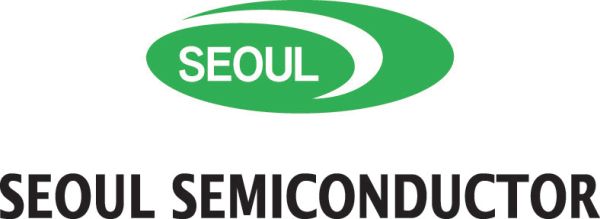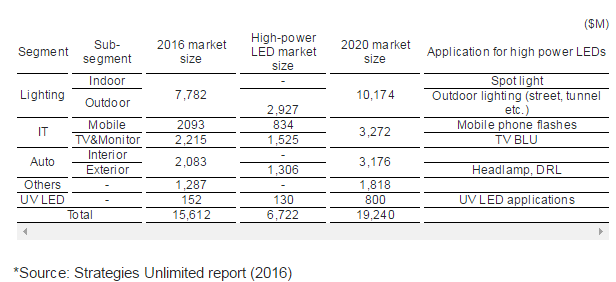On March 31, 2017, Seoul Semiconductor Co., Ltd (“Seoul”) filed a patent infringement lawsuit in Germany in the District Court of Düsseldorf against Mouser Electronics Inc. (“Mouser”), a global electronic components distributor, asserting infringement of an LED patent.

(Seoul Semiconductor/ LEDinside)
According to the complaint, the accused products include LEDs for high-power light emission. Further investigation suggests that the accused products from Mouser are manufactured by multiple LED companies, including Everlight Electronics Co., Ltd., a global top-10 LED maker. In the lawsuit, Seoul has sought a permanent injunction, damages, and recall and destruction of the allegedly infringing products.
The asserted patented technology serves to efficiently extract light emitted from the internal LED structure by treating LED chip surfaces, thereby significantly improving light intensity and brightness. This patented technology has been widely used for various high-power LED applications, such as automobile lighting, cell phone flashlights, outdoor lighting, UV LED appliances, and others.

According to market research firm IHS, the LED penetration rate in automobile headlamps is expected to increase sharply to 32.3 % by 2021 from the current penetration rate of 16.4%. This high-power LED technology is already being used for exterior automobile lighting including headlights and daytime running lights. Furthermore, it is expected to become a significant technology for electric vehicles and autonomous vehicles, which require high-power
LED lighting with high heat dissipation for energy efficiency.
In addition, this high-power LED technology also applies to LEDs for mobile phone flashlights, which require higher light intensity. Because margins for flashlight LEDs are higher than those for backlights, the flashlights LED market has still grown steadily despite the overall decline in the IT sector LED market.
Further, this high-power LED technology is widely applicable to general lighting products for outdooring illumination and commercial or industrial uses because such technology substantially enhances light efficiency and improves the brightness per unit area obtained from the LED. The technology is also widely used in manufacturing UV LEDs for sterilization, purification and curing processes. The UV LED application market is expected to grow rapidly, reaching $800 million by 2020.
Beginning with this lawsuit, Seoul plans to actively defend its patent assets against infringing high-power LED technologies. Seoul has already identified infringements of other patents it possesses that relate to high-power LEDs and will be considering additional infringement lawsuits.
According to the Institute of Electrical and Electronics Engineers (IEEE), among the companies which manufacture LED components exclusively, Seoul Semiconductor was the only one to be selected in the 2013 Semiconductor Manufacturing Patent Power Ranking. Seoul Semiconductor was also selected for the same category in 2012.
IEEE’s patent power scorecards for each industry segment are based on the evaluation of the patent portfolios of more than 5000 leading commercial enterprises, academic institutions, nonprofit organizations, and government agencies worldwide. They take into account not only the size of the organizations’ patent portfolios, but also the quality of their patents with regard to growth index, impact of the patents, originality, and general applicability of the patents.
Ki-bum Nam, Vice President of the Lighting Business Department at Seoul Semiconductor, said, “The asserted patent is considered an essential technology for manufacturing high-power LEDs and has been widely used in various LED applications.”
Nam added, “However, there are many LED products currently on the market that infringe this patented technology, so we have decided to begin enforcing our patent rights in such cases. To create a fair market competition and promote technological innovation, we continuously take any and all actions necessary to deter such infringement and protect our intellectual property.”












